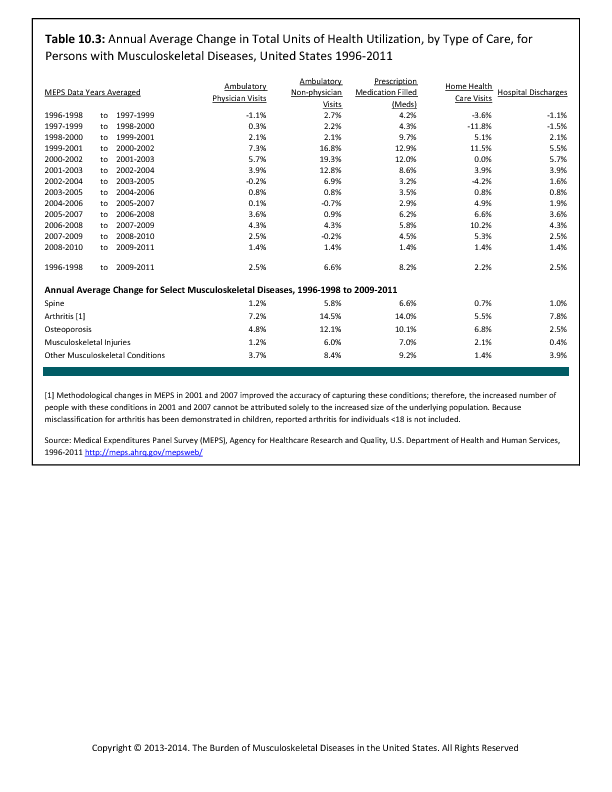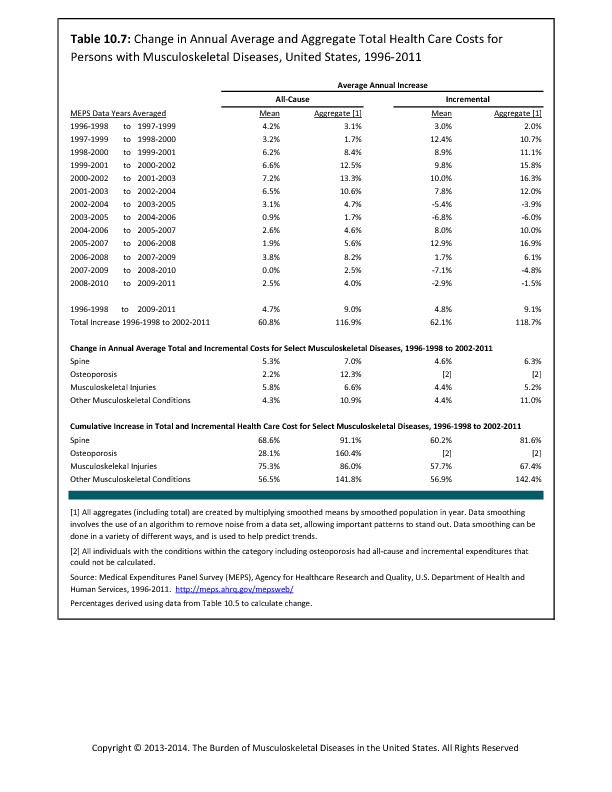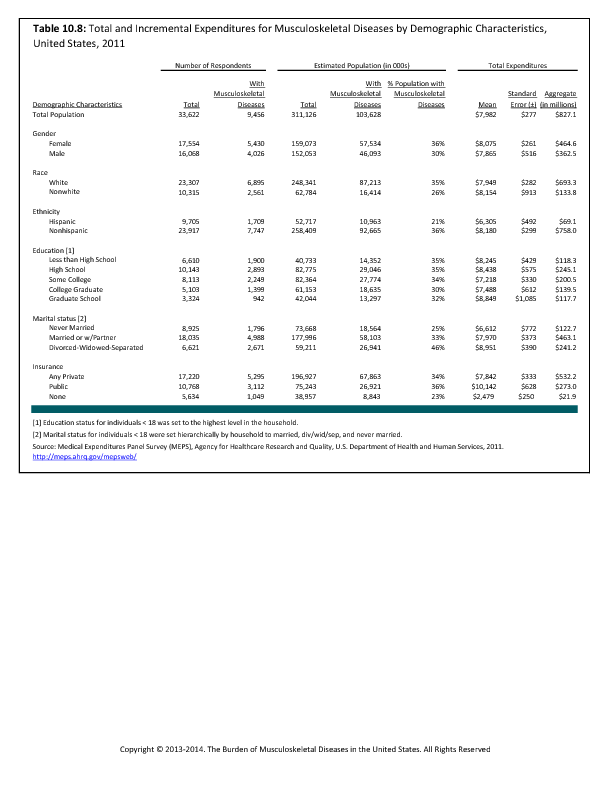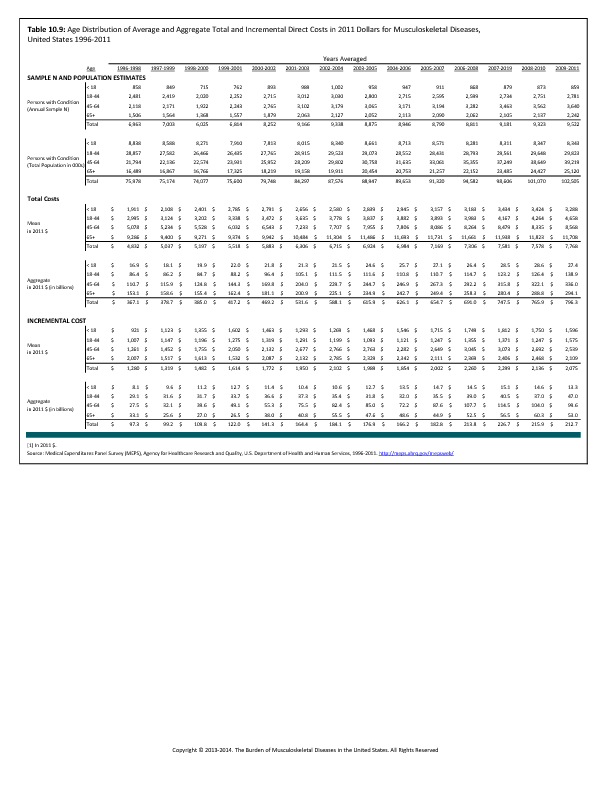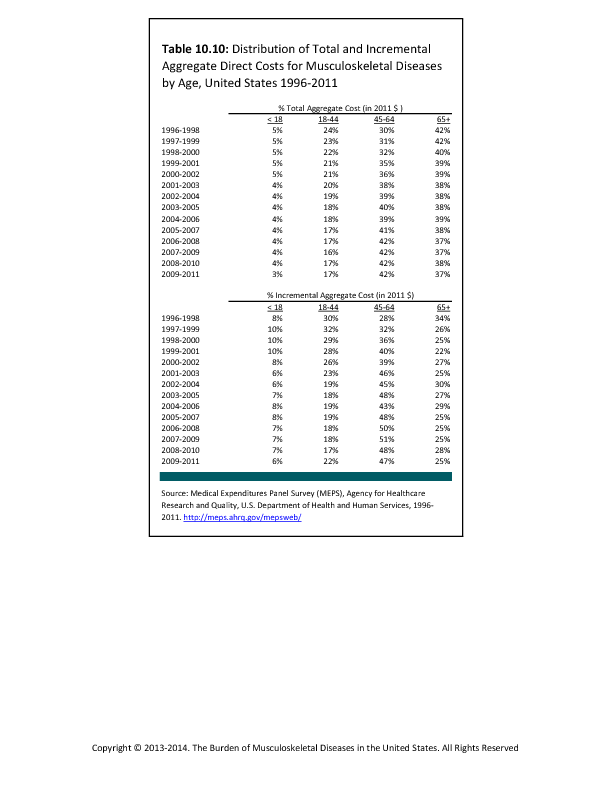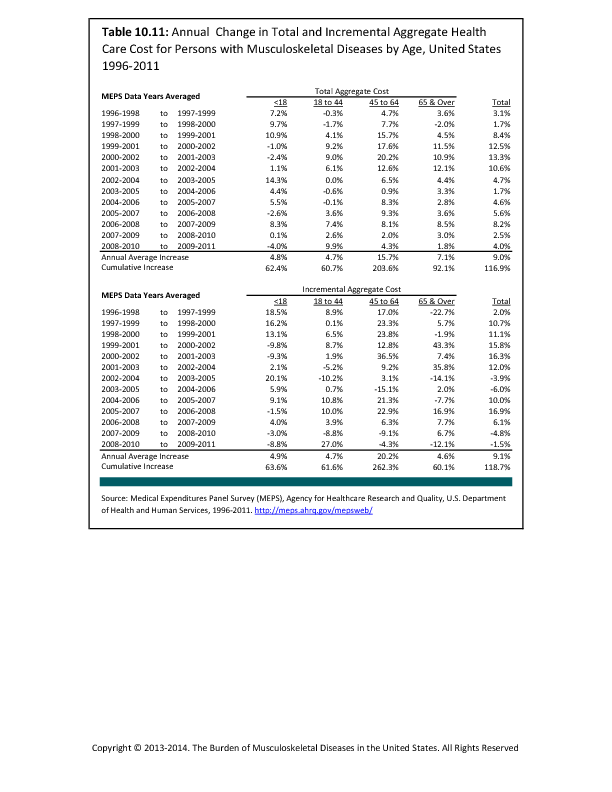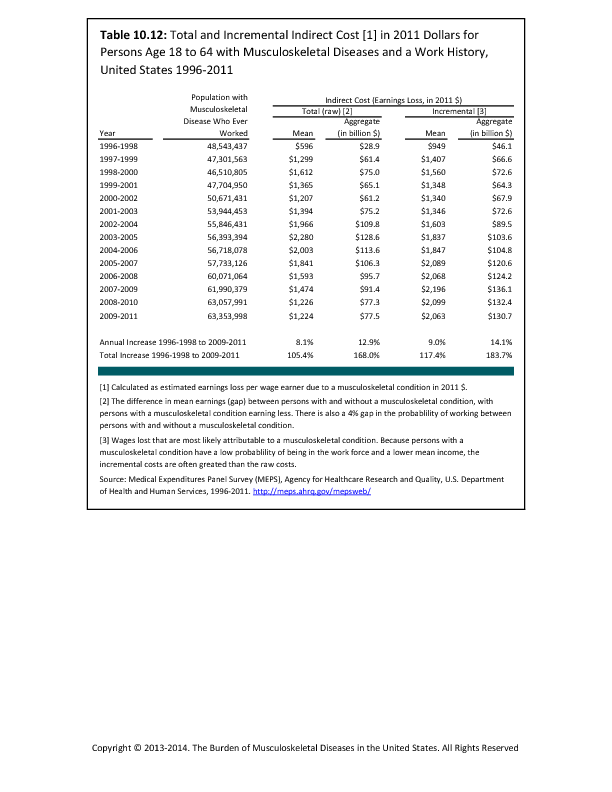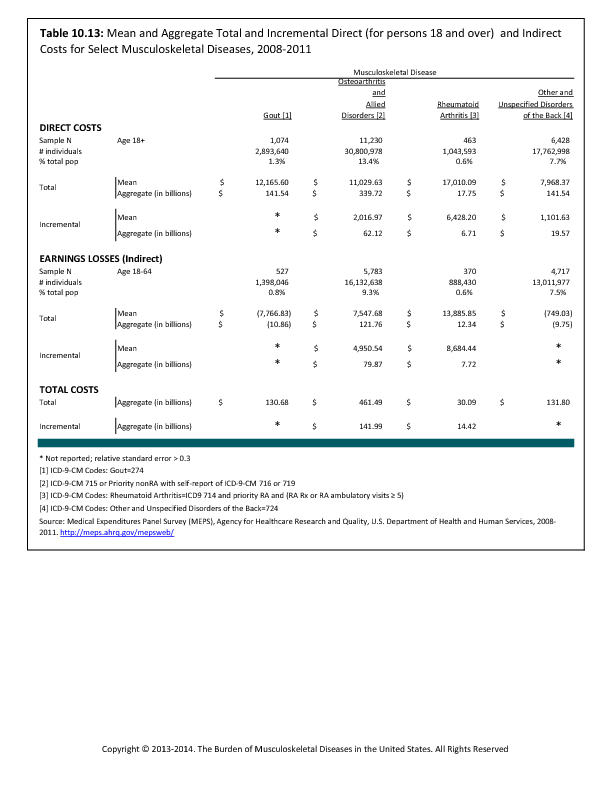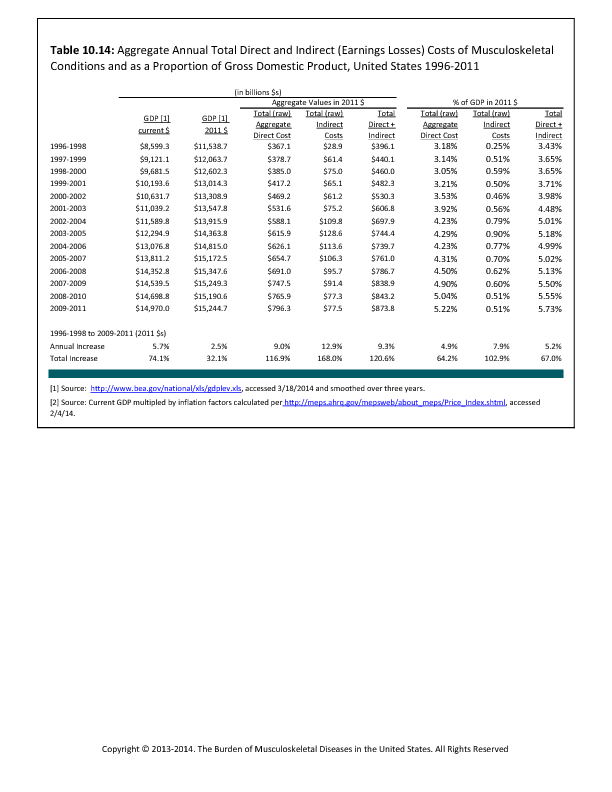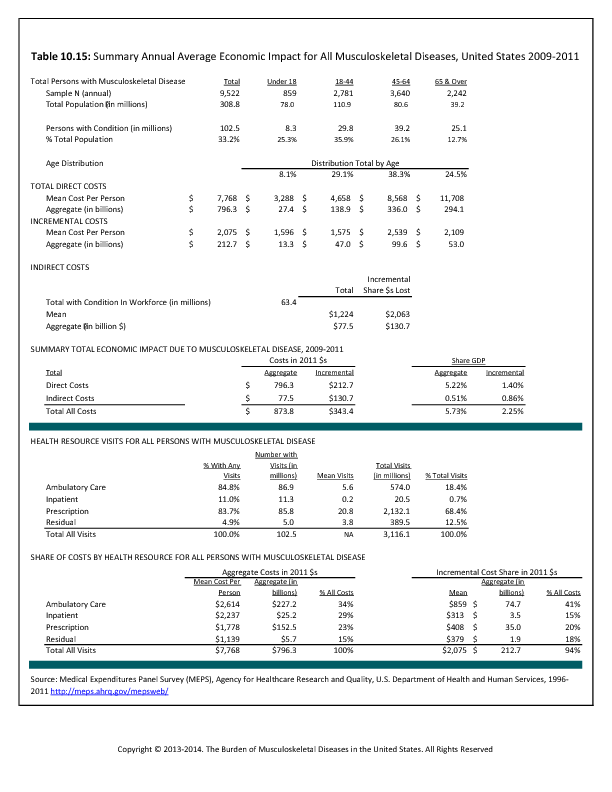Over the period 1996 to 1998 through 2009 to 2011, slight changes in the proportion of total medical care expenditures devoted to ambulatory physicians visits (from 31% to 34% of total) and to inpatient care (from 36% to 29%) occurred. However, the share of musculoskeletal health care costs devoted to prescription medications increased the most, growing by more than 60%, from 14% to 23% of total cost. Computed in 2011 dollars, the mean annual prescription cost per person increased 167%, from $665 to $1,778. During this time, development of biologic agents for several inflammatory conditions, particularly rheumatoid arthritis, occurred, as well as the widespread use of the cox-2 inhibitors (coxibs) for musculoskeletal pain, and may have accounted for some of the rapid increase. However, the growth in per-person total expenditures for prescription drugs has slowed. From 1998 to 2000 through 2002 to 2004, annual growth in expenditures for prescription drugs averaged 15%, but since 2004 has averaged about 3% a year. (Reference Table 10.4 PDF CSV)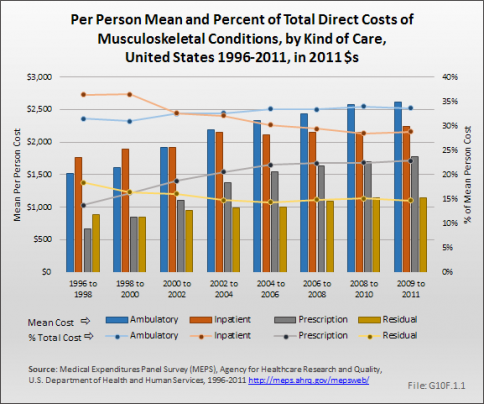
The per person increment in ambulatory care expenditures for musculoskeletal diseases grew by 51% between 1996 to 1998 and 2009 to 2011, from $570 to $859 in 2011 dollars. The increment for inpatient care more than doubled, from $102 in the 1996 to 1998 to $313 in 2009 to 2011. Ambulatory care represents the largest component of the increment in expenditures, indicative of the importance of ambulatory care in musculoskeletal diseases relative to other condition groups. (Reference Table 10.5 PDF CSV)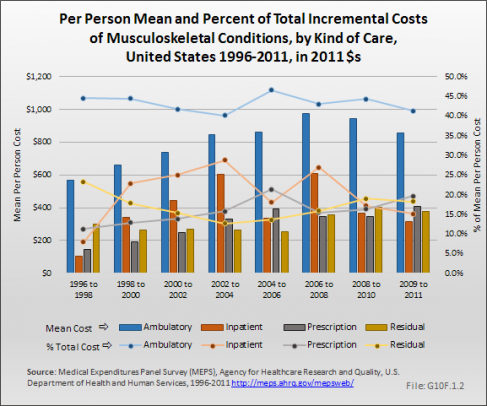
Edition:
- 2014

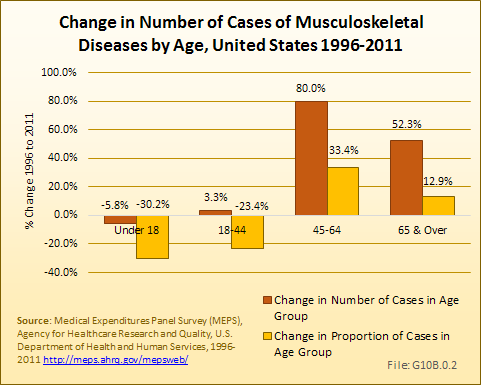

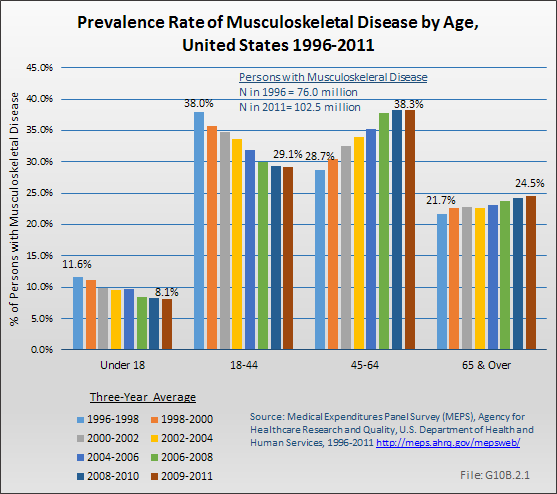


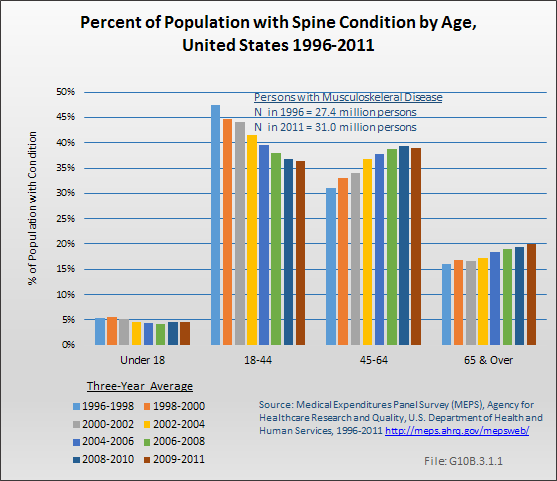
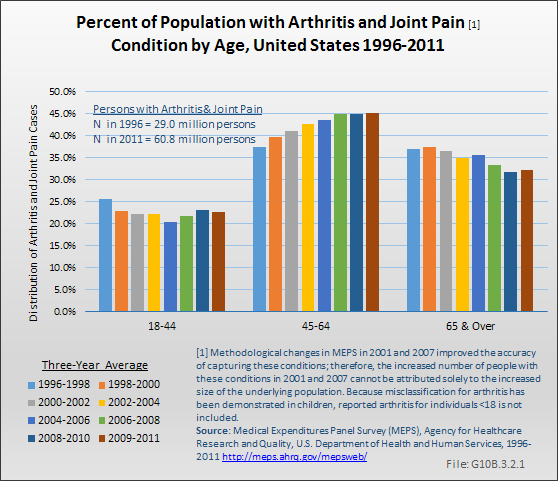

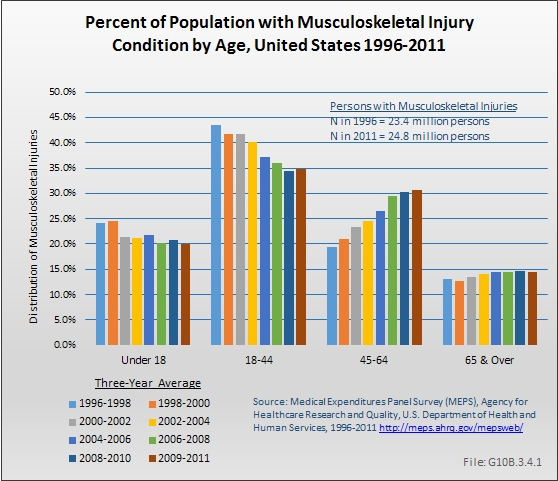
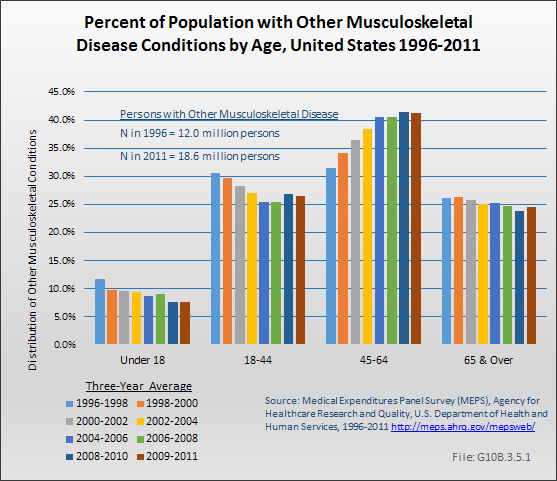
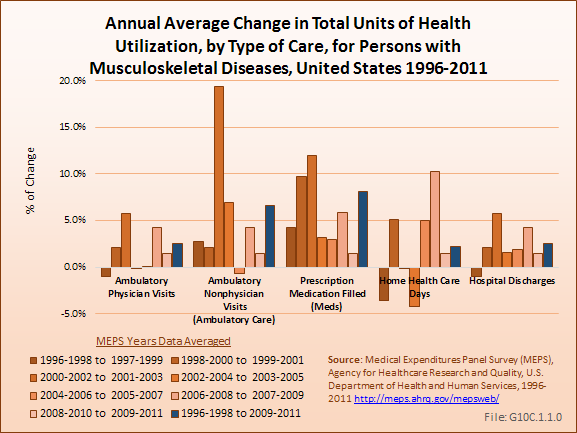
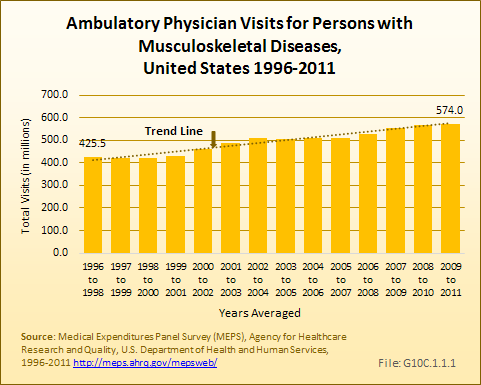
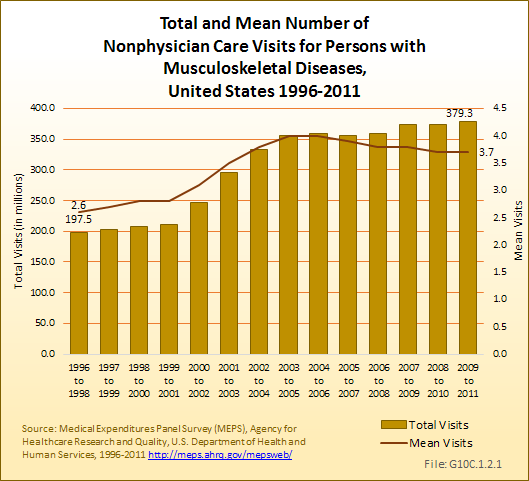
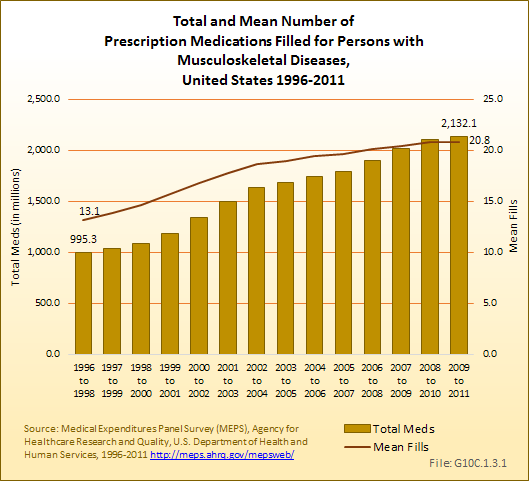
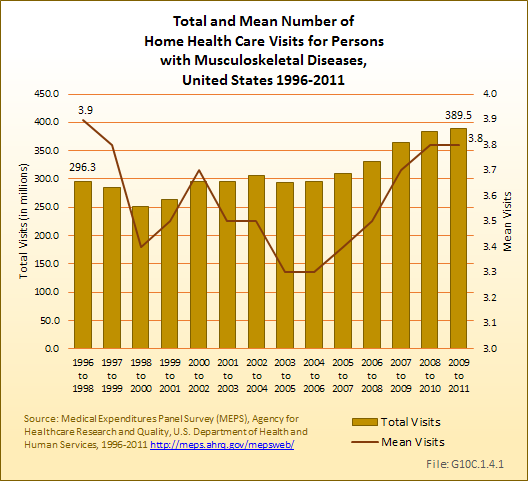
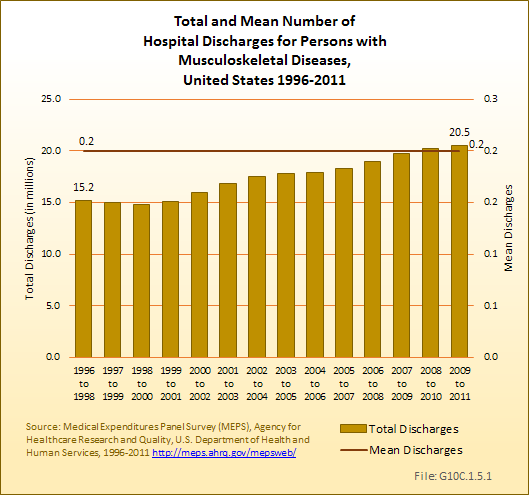


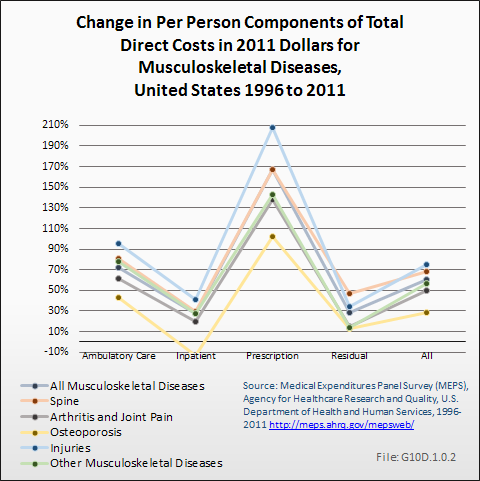
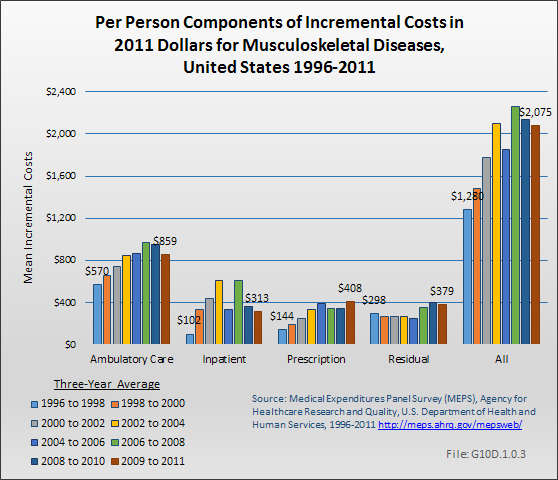
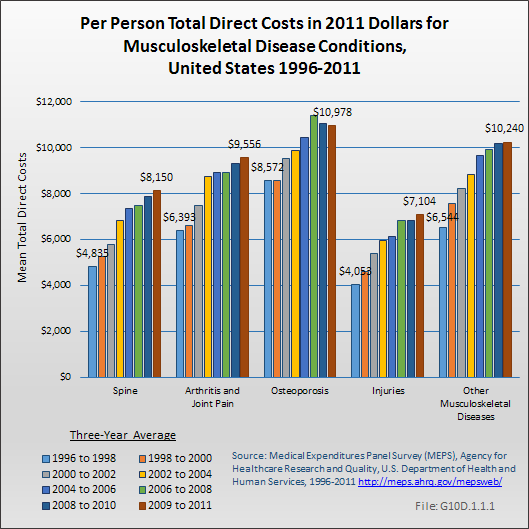

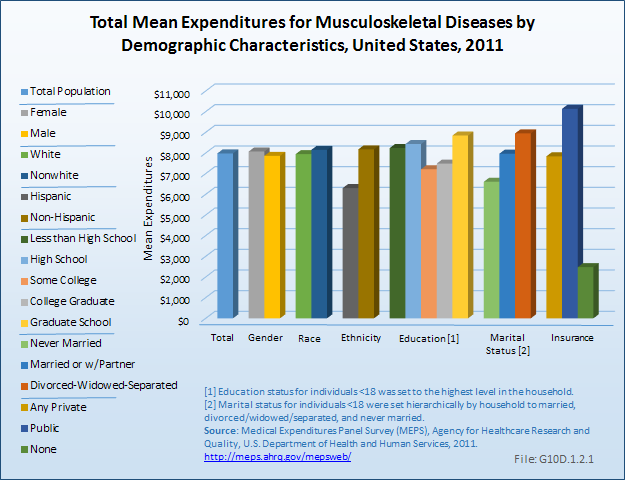
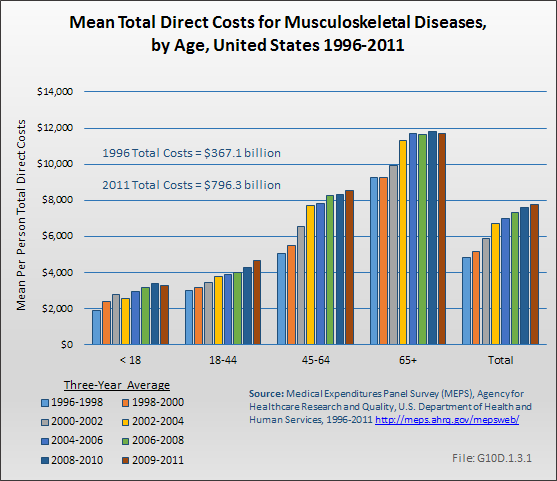
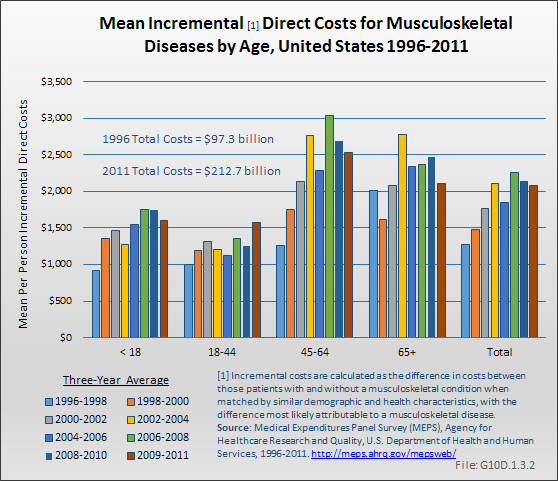


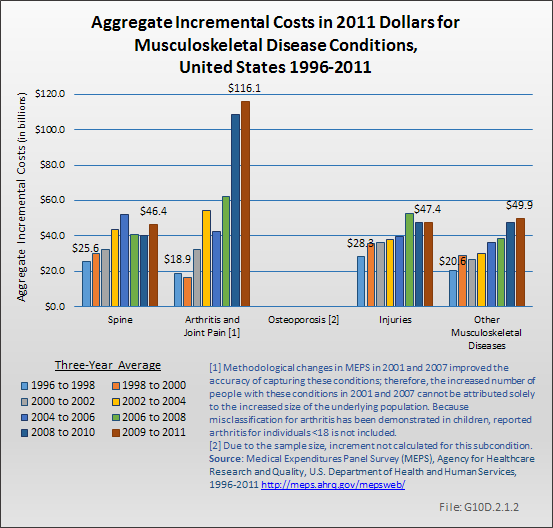
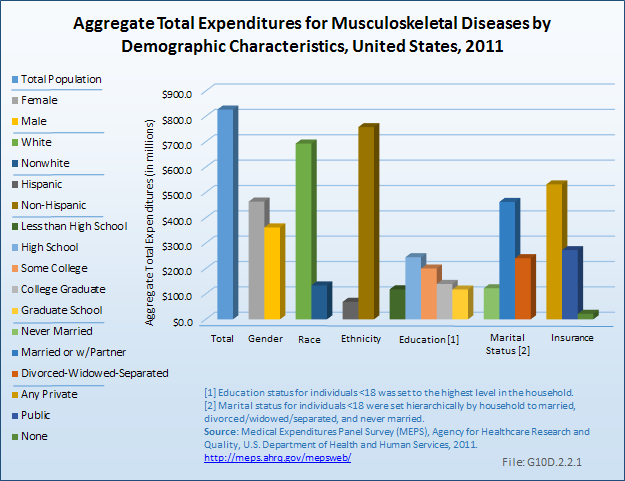


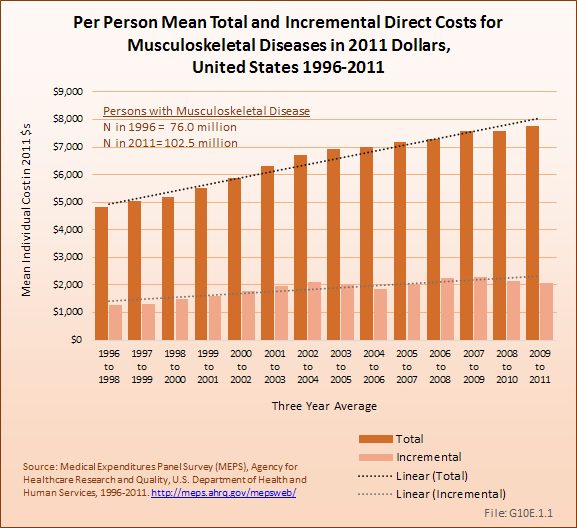


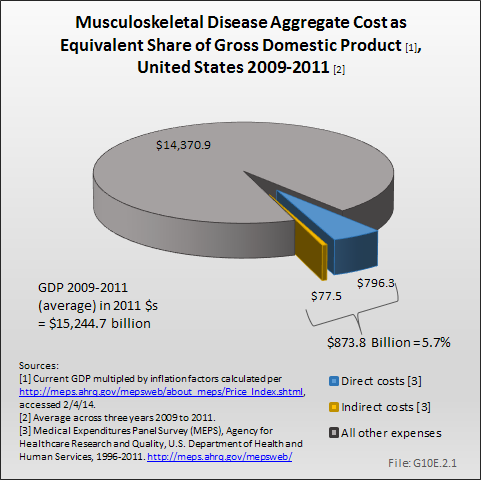
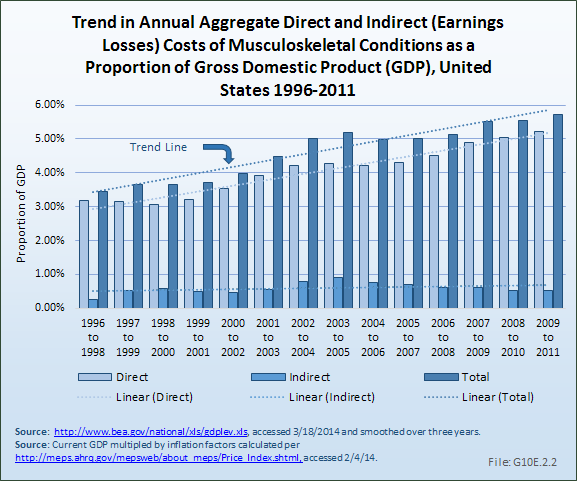

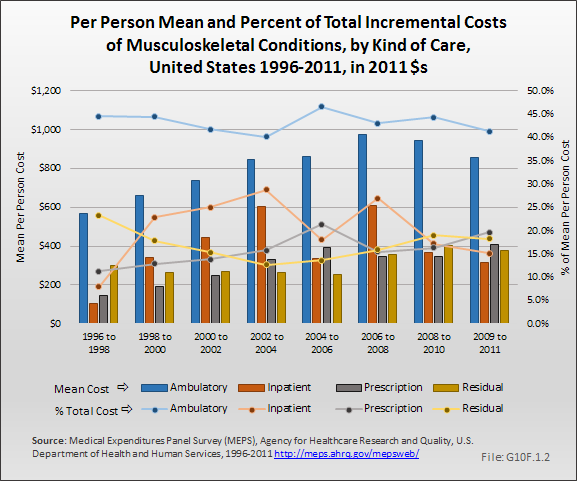
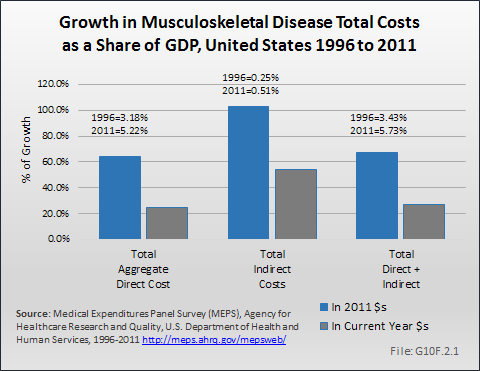
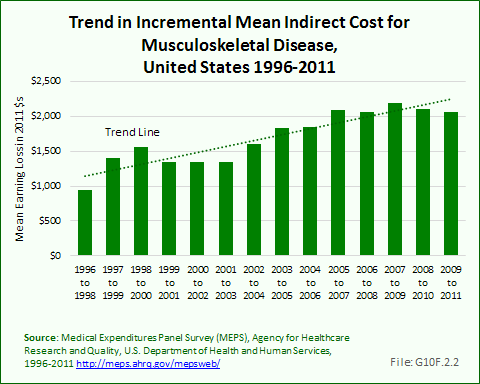

 Download as CSV
Download as CSV


